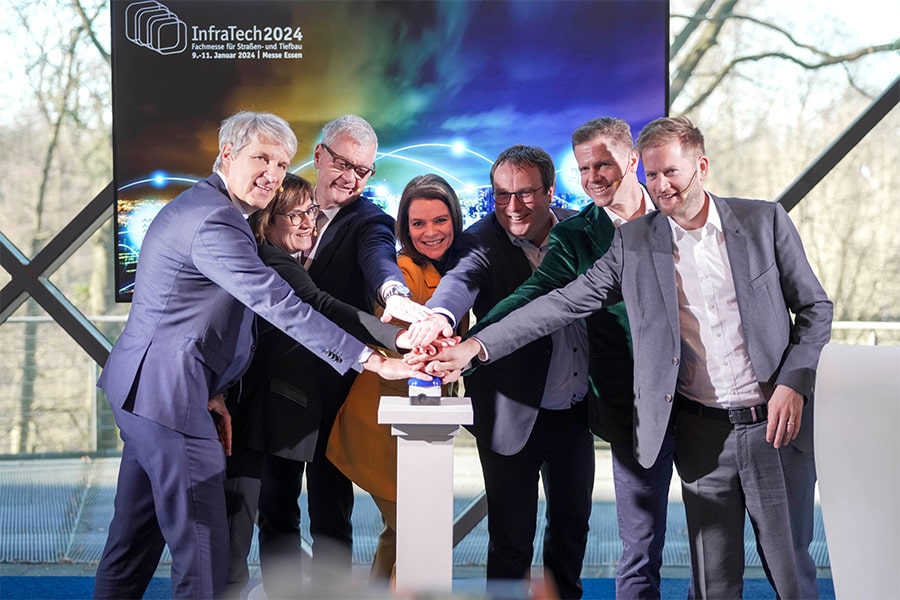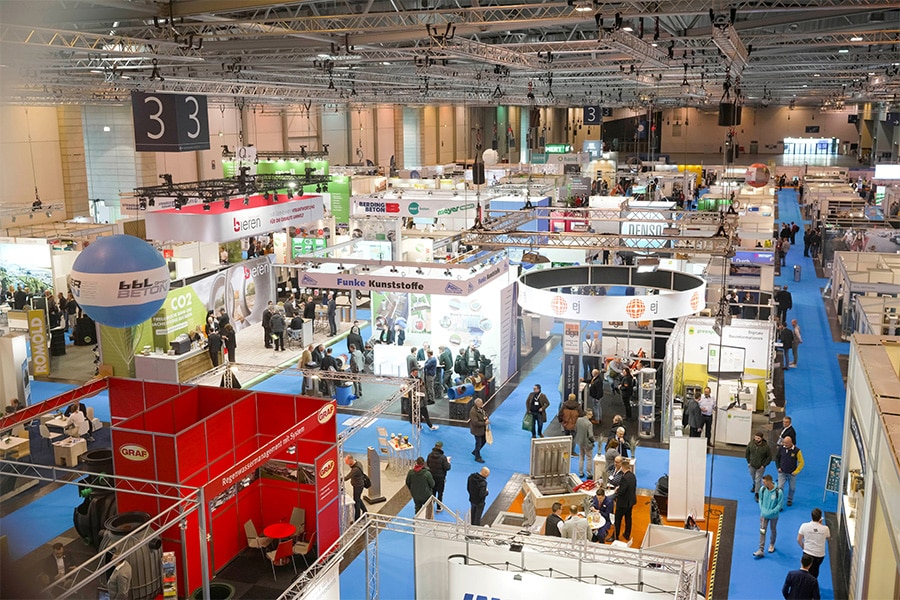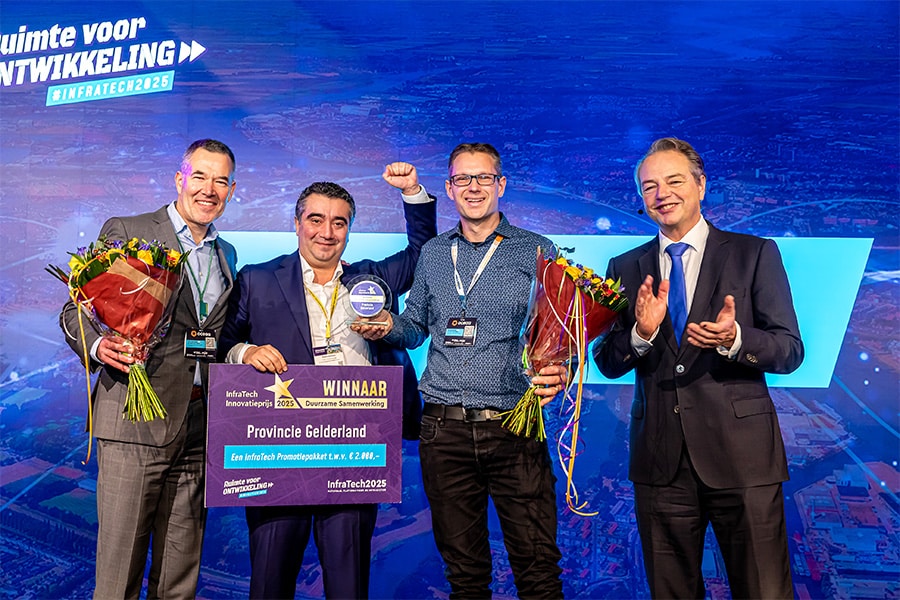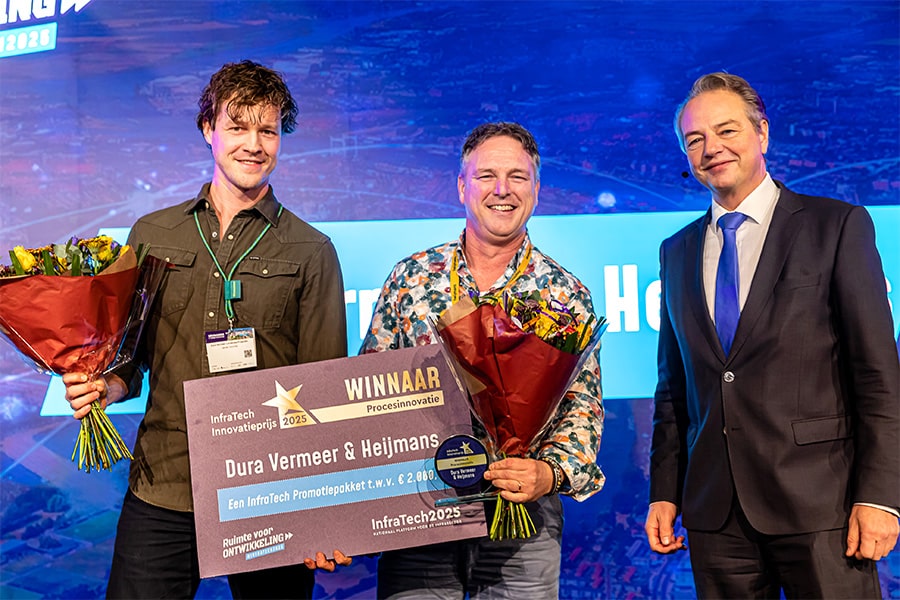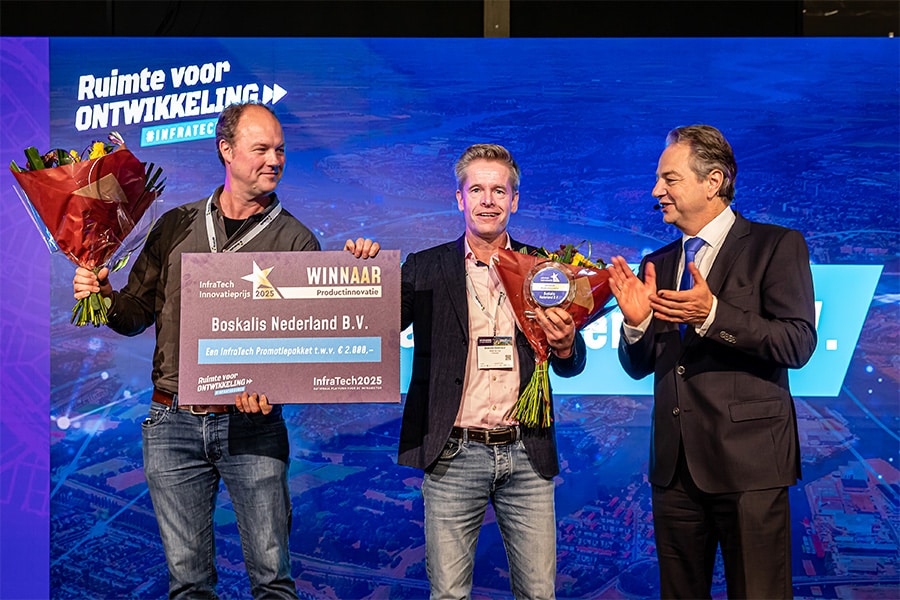
Floating concrete mixture
InfraTech Innovation Award 2025 - Product Innovation category
Boskalis' Buoycrete Stabilization is winner of the InfraTech Innovation Award 2025 in the product innovation category. The floating and moldable concrete mixture is as strong as conventional concrete and as light as water. With these properties, Buoycrete lends itself perfectly to carrying out underwater repairs, such as sustainable quay repairs, among other things, Boskalis has already proven in the inner city of Amsterdam.
Buoycrete was developed as a result of an internal innovation process for underwater construction within Boskalis, begins senior Research & Development engineer Guido Visch. "The idea was to develop a mixture with the same density as water, making it effectively weightless underwater. We then started experimenting with mixture compositions in our own laboratory and eventually arrived at Buoycrete with a density of 1,000 kg/m3, identical to that of water. So when you apply it underwater, you don't add any weight and you can build form-free, while after curing, the mixture becomes rock-hard just like a conventional concrete mixture."
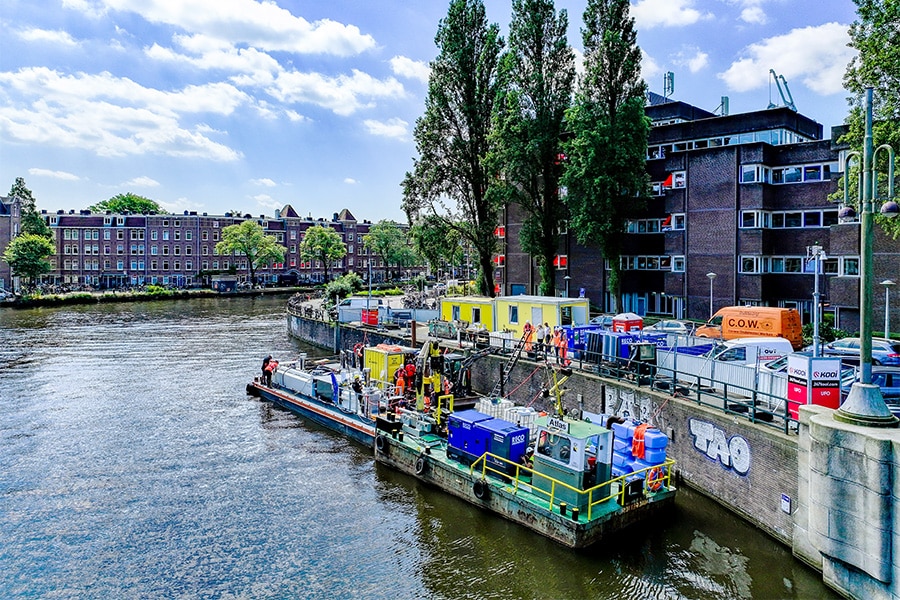
High fill rate and no weight gain
Buoycrete is an amalgamation of a "neutrally buoyant concrete mix," or a floating and non-soluble concrete mix. "The ability to fill spaces underwater with a high fill rate and without weight gain of the structure makes it ideal for underwater repairs, such as life extension of quay walls," says Guido. After a feasibility study and successful experiments in its own laboratory -and in collaboration with Bruil- several Boskalis divisions and individuals were hooked up to further explore the possibilities of Buoycrete. As a result, the 'floating concrete mixture' was put forward for the City of Amsterdam's innovation request for life extension of historic quay walls, designed to get the quality of Amsterdam's quays up to scratch faster. As project leader, Stefan de Jong is closely involved in this project from Boskalis Netherlands. "The process of replacing Amsterdam's quay walls is complex, partly because of the limited working space and many obstacles such as cables, pipes and trees, but also because of the inconvenience it causes. Why replace when there is also a way to maintain quays for longer, with much less inconvenience?"
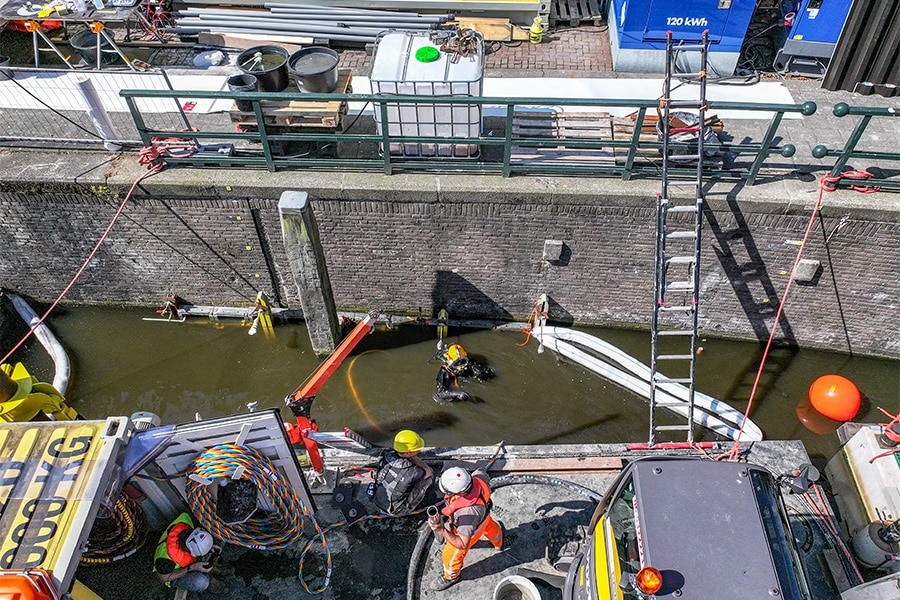
Maintaining authentic character
Amsterdam suffers greatly from soil leaching at its quay walls. "Erosion and leaching have created holes in the quay walls," Stefan explains. "The result is that the front row of piles of the quay wall stands in a vacuum and is affected. With Buoycrete, we fill the resulting cavities and glue everything back together into a solid structure, as it were. This also ensures a more favorable distribution of forces, with less load on the front piles. With Buoycrete, we not only prevent erosion, but also strengthen the quay wall construction, thereby extending its lifespan while maintaining its authentic character. The inconvenience remains limited because we are working entirely from the water and not on the quay. In the spring of 2024, we successfully renovated and reinforced a 30-meter quay wall in this way. The innovation call for life extension of quay walls has been a nice springboard for us to test Buoycrete Stabilization in practice. We are very grateful to the City of Amsterdam for that. Now we are ready to further scale up the concept."
The gentlemen are justifiably proud of winning the InfraTech Innovation Award 2025 with Buoycrete. "With the innovation prize we hope to generate more publicity for our innovation and thus contribute to the enormous replacement and renovation task of infrastructure in the Netherlands. Stabilization using Buoycrete offers clients a unique method to preserve historic quay walls and spread investments favorably." Several municipalities have already come forward. To be continued, no doubt!
